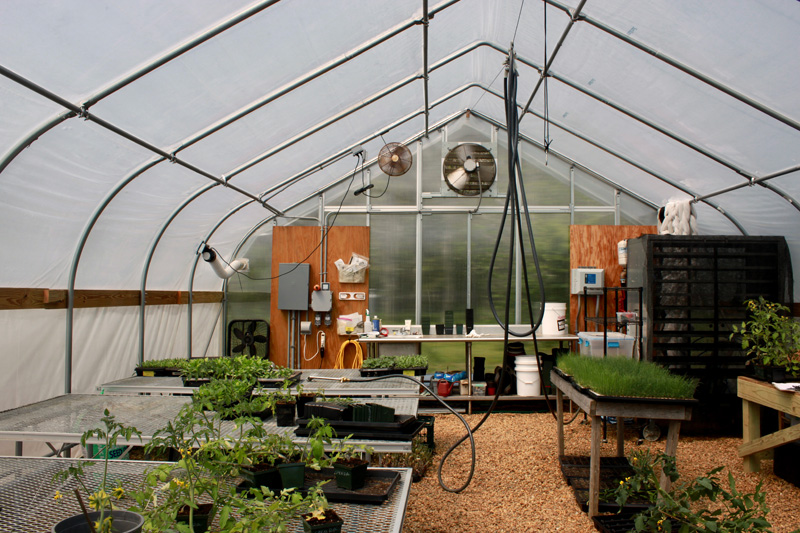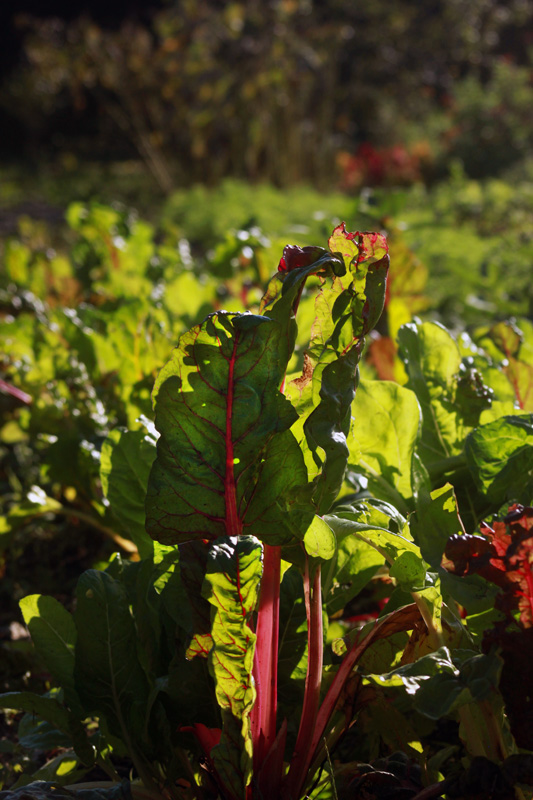Mallory Watts’ first Martha’s Vineyard experience was the Island in March in the middle of a snowstorm. Gray, windy, cold, and isolated. It was 2017 and she was here to check in on a family’s Chilmark property. “Even though so much of where we are standing was covered in snow and completely overgrown, I immediately saw the potential. In 2020, it was so wild in some areas, that when Mitchell Posin and Ned Allen-Posin helped me put in the deer fencing, we had to use Google Earth to map out fence lines.” She laughs and continues, “It’s been a process. We started with twelve beds. Now we have one hundred.”
Note that when Mallory says, “We started with twelve beds” she means “me.” Until only very recently, Chilmark’s Milkweed Farm has been just her, clearing land, creating beds, cultivating the land with “the help of family and a few friends.” Five years in, Mallory has just recently hired farmhand Graham Webb to help. “I built the greenhouse by myself. I don’t recommend doing that,” she laughs. “I mean, of course I had help installing a new well, putting in the sink and getting the electricity running, but the rest, I just figured out.” It must be noted that her first greenhouse, which is about 20 x 30 feet, looks professionally installed. Mallory points to the farm’s 100-foot hoop house. “My mom helped me build that.”


Speaking of her mom, not too long ago, Mallory’s mom (and dad) thought her daughter was going to be a doctor. Mallory’s journey from growing up in Bloomfield Hills, Michigan, and graduating with a double major in International Studies and Spanish while following a pre-med track from the University of Michigan to being a 31-year-old farmer on Martha’s Vineyard weaves and winds. But all good life evolution stories do. After getting her undergraduate degree, Mallory moved east to work for a Park Avenue plastic surgeon. She lived in Stamford, Connecticut — New York rent was too steep — and commuted into Manhattan. “I was trying to figure out if I wanted to go to medical school,” she says. “I had taken a food systems course in college and loved the material, so I was also thinking and reading about sustainable food systems and farms and how they supported health.”
A mentor helped her sift through her occupational choices, and Mallory realized that medical school was not her destiny. She quit her job at the surgeon’s office and enrolled in the Youth Farm Urban Agriculture Certification Program in Brooklyn, N.Y., which is a seven-month-long program. To support herself, she took odd jobs and worked as an executive assistant. Shortly after the course finished, a recruiter contacted her to see if she would like to work for a family as their personal assistant. She met them. And, as fate would have it, the family happened to share Mallory’s passion for food systems, plants, farming, and biodiversity, and had a small plot of land in Chilmark that needed stewarding, which led to her 2017 storm visit.

Milkweed Farm, which was officially born in 2018 “with temporary deer fencing,” now grows garlic, fresh herbs, tomatoes, greens, kale, strawberries, chard, peppers, peas, persimmons, paw paws, and hazelnuts, among other fruits and vegetables on a verdant acre. While the farm’s total property is about 12 acres, Mallory wanted to keep the cultivated area to a smaller scale. “One of my priorities is to not overgrow and waste food by growing more than can or will be eaten.” Milkweed Farm sells its produce at the West Tisbury Farmers Market on Wednesdays and Saturdays. Alchemy, Camp Jabberwocky, the Covington, Grey Barn, MV Salads, and the Fish House all source from Mallory. “We donate any leftovers from the Farmers Market to the Island Food Pantry,” she says.
As the farm has evolved, Mallory and the family who owns the land have defined a few principles that guide the farm’s growing process. Their approach largely embraces regenerative landcare practices. They rotate crops annually, use compost applications to enrich the soil and boost its microbial activity, have cover crops, follow integrated pest management protocols, and do not till so there is less erosion, less disruption of the soil’s microbial life, and less carbon released from the soil.
But the even more exciting work that Mallory is doing with the land is the way she is thinking about the farm’s overall ecology and increasing the biodiversity of the land, including native plant species. She points out two old apple trees, a beach plum hedge, and a paw paw grove that will support the farm’s understory. “I really enjoy the exercise of trying to solve how to grow as much food on a small plot of land. This way I can take care of the soil better, I can also use less water and calculate yields more accurately. It’s really cool to see how we can think about and define success. Are we maximizing diversity and growing beautiful food?”



Mallory is not the first enterprising woman to inhabit this property. The farm’s house was built in 1865 by Freeman Hancock. In 1904, Freeman’s son, Dana, inherited the house and sold vegetables and eggs from the farm. In 1922, Dana’s daughter, Priscilla, began making chocolates, which she trademarked, “The Priscilla Hancock Candies.” Priscilla lived with her partner Lucy Wiig and ran her chocolate business out of the house until 1956. Hancock Beach is named after her.
“I find inspiration from her and this property. People stop by and I hear stories from people who knew Priscilla. It’s special to hear about a woman who was my age, down here making chocolates about 100 years ago. In many ways, I want to honor her and the work she did here on this land — to keep the work she did alive, honoring her and her family.”
And medicine has not left Mallory’s life entirely. She is engaged to Janna Kramer, a nurse educator at the Martha’s Vineyard Hospital. They went to high school together and reconnected in New York. “Janna worked at NYU Langone in 2020. It was an intense time.” Mallory pauses for a moment. “Well, after that, I feel even more thankful for the land and the space here. We’re getting married in September. And I get to grow food. It’s pretty good.”

